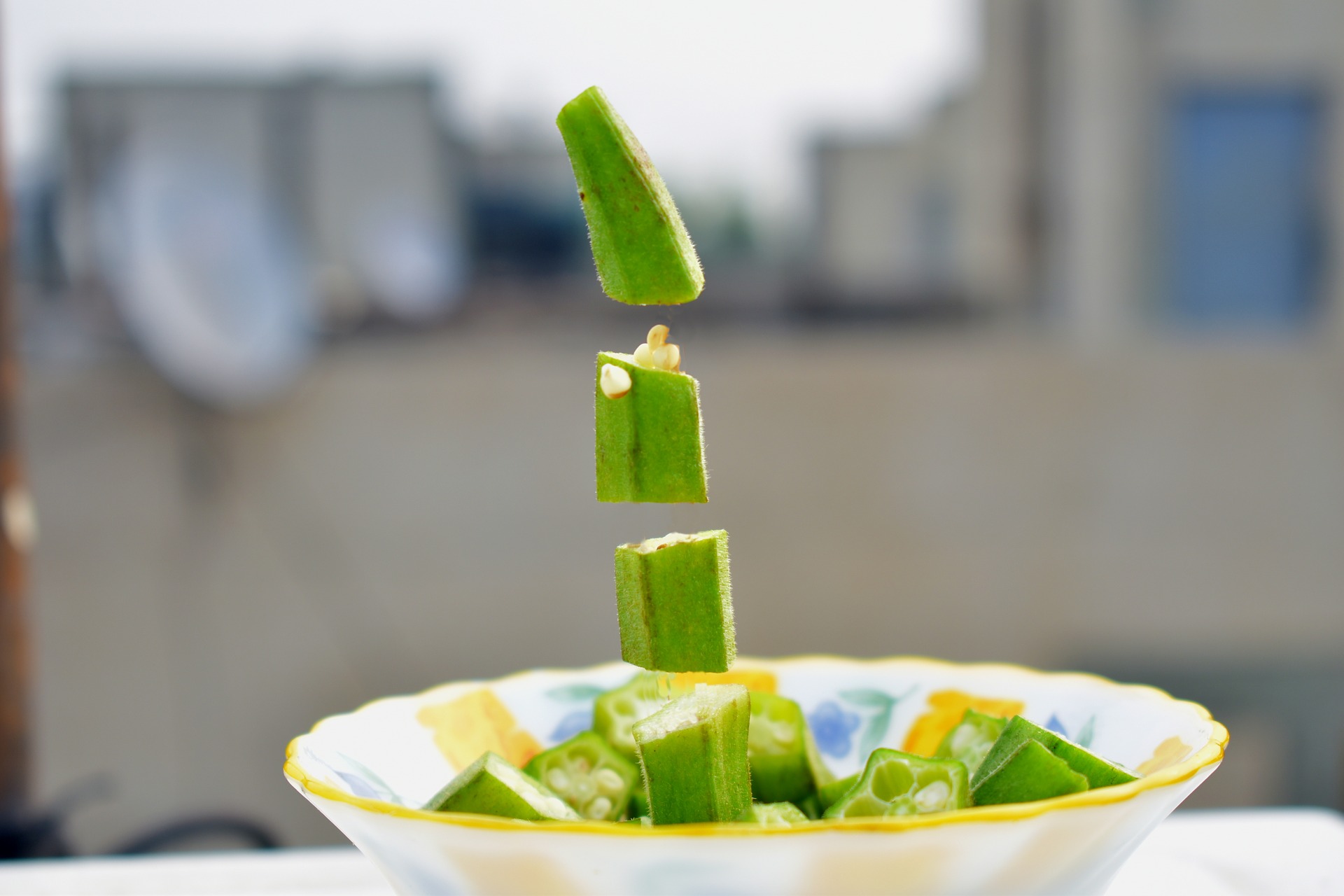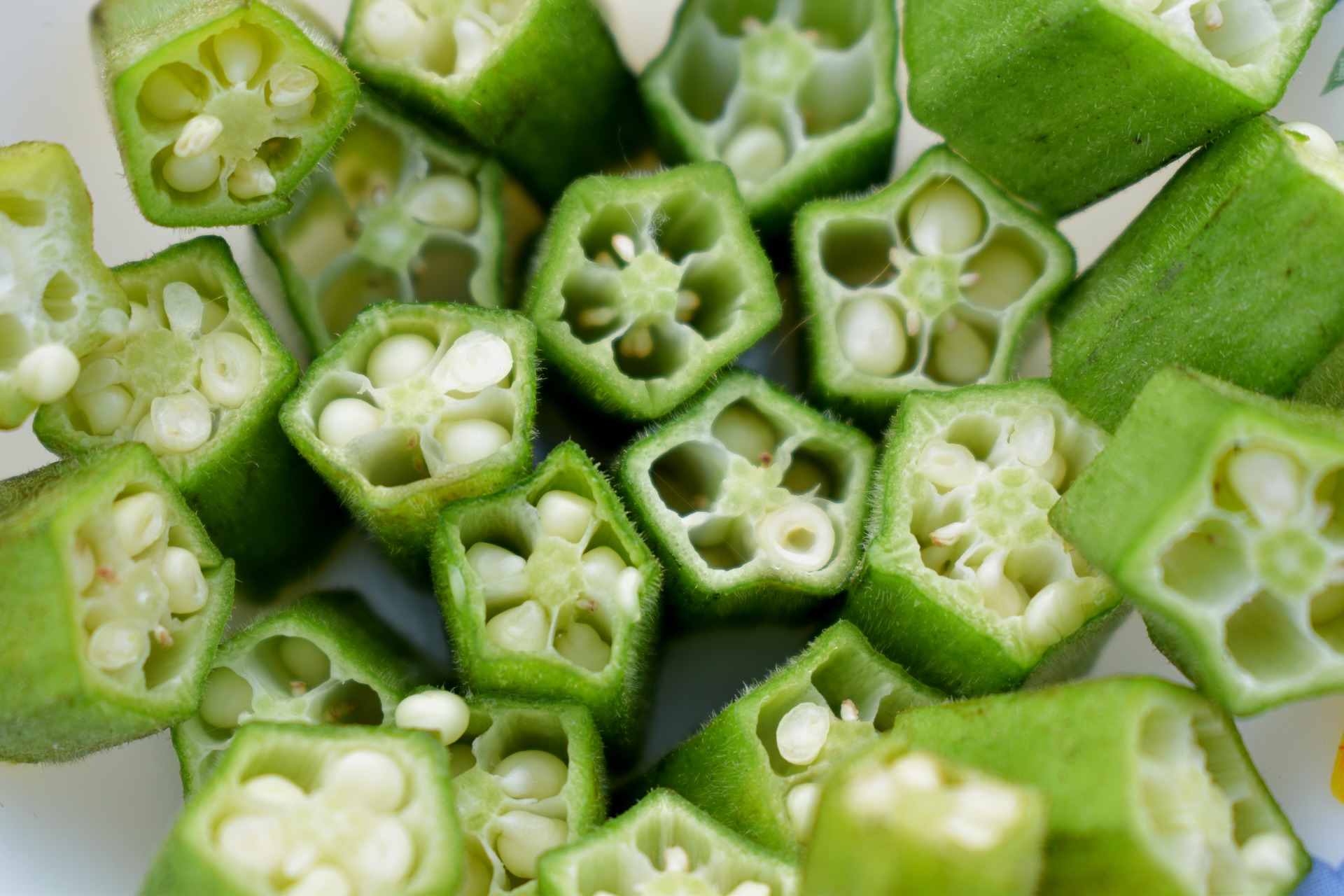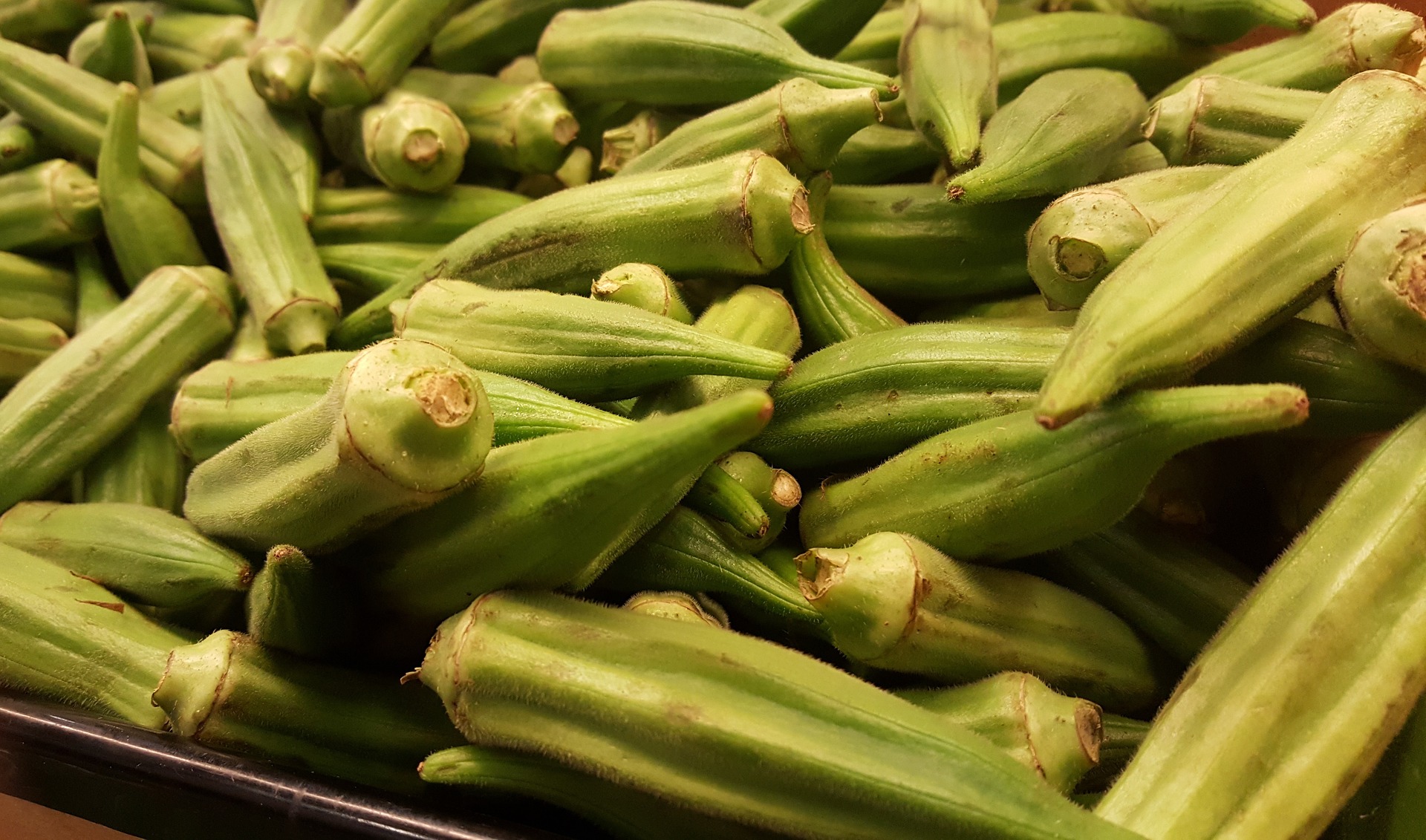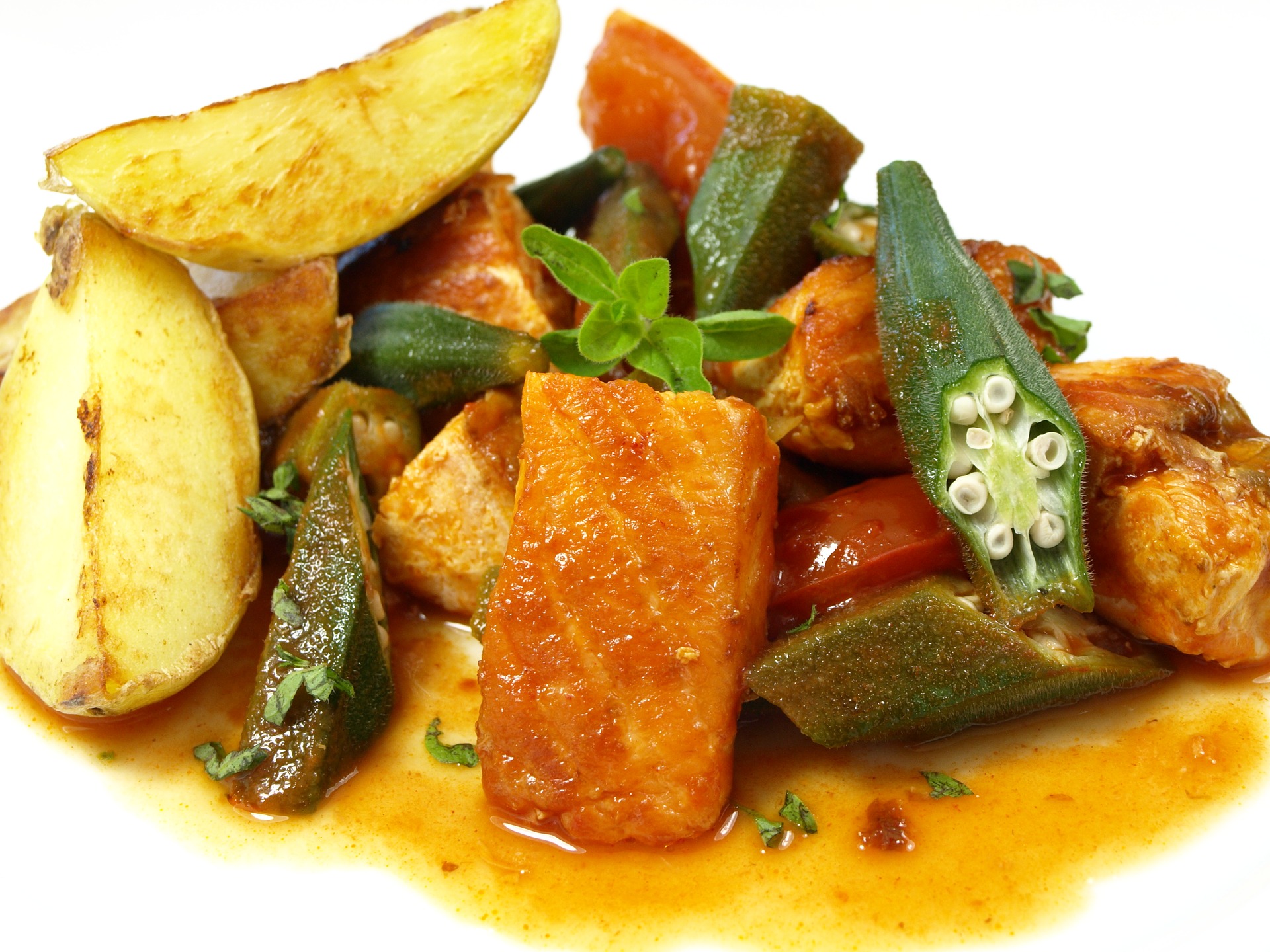 by Sharon Quercioli
by Sharon Quercioli
Okra! Okra. It’s not a vegetable that gets everyone excited, but it should be. Okra is a great source of vitamins and minerals, especially fiber. Not only that, okra is great for a number of uses, not just for its nutritional value. You often see it in dishes like gumbo, breaded or fried. But between you and me, there are some other great dishes that are great for your waistline as well as your taste buds.
What is Okra?

Okra is known as a warm climate vegetable but can grow easily in many different types of environments. It is a vegetable with a mild taste. The outer texture is a bit fuzzy (think peach fuzz) while it is soft on the inside and has a viscus juice along with small edible seeds inside the fuzzy pod. Some people call it lady fingers because of the finger-like shape. To me, they look a bit like small hot peppers (but green).
When you buy some in the market, look for the skin to be fairly smooth and tender. Look for bright green pods that are free of blemishes. Also, make sure that the ends aren’t dry and that there are no brown spots on it. If you’re looking to sauté them as soon as you get home, grab some that are under five inches long. If you’re looking to put it in a stew, look for larger pods that are a bit tougher—so they don’t get too soft while in the broth.
If you’re not going to cook it when you get home, know that okra is best when it is fresh. That means that, ideally, you should only store it in your fridge (wrapped fairly loosely in a plastic baggie) for about four days.
What are the Health Benefits of Okra?

Okra is a great source for fiber, vitamin K, and folate. Because of the high amount of vitamin K found it them, people who are taking blood thinners should watch their intake. Ask your doctor for the recommended amount to eat.
They are also great for their level of antioxidants. The seeds within the pods contain flavonoid and oligomeric catechins derivatives. These have been known to having a lower risk for cancer. Specifically, the lectin found in okra (as well as beans, grains, and peanuts) have been used to treat (breast) cancer cells in specific studies. (You can read more about that here: https://www.medicalnewstoday.com/articles/37136.php.)
Okra is also wonderful for your heart and to help manage blood sugar in diabetics. Foods that are high in fiber have been proven to lower the risk of stroke, obesity, diabetes and heart disease. In fact, high-fiber foods have been known to slow the development of heart disease in people who already have it. Check with your local doctor to see if changing your diet to one with more fiber can help you with any of these issues.
While the vitamin K may be limiting to those who take blood thinners, those who have osteoporosis will benefit from it. The high levels of vitamin K found in okra are great for your bones. Why? Beause it helps your body (specifically your bones) absorb calcium.
Today’s Recipe: Ratatouille

Besides being a great Disney movie, ratatouille is incredibly healthy for you. This is a great recipe for any season, even if it does specifically ask for summer squash. When you think about healthy dishes, which are full of vitamins and minerals, most are wonderfully bright with various colors of the rainbow. The theory is that you should have five different colors with each meal to ensure that you are getting a varied diet. This ratatouille covers at least four of those colors for you. Not to mention, it’s delicious!
Things You’ll Need:
- Couple summer squash
- Couple zucchini
- Sixteen ounces of fresh or frozen okra, chopped
- Couple white onions, sliced thinly
- Ten cloves fresh garlic
- Four medium vine-ripe tomatoes
- Sea salt
- Smoked paprika
- Ground cumin, about a quarter of a teaspoon
- Fresh basil leaves
- Three tablespoons olive oil or avocado oil (this will be divided)
What You’re Going To Do With All That:
- In a large pot, heat a tablespoon of avocado or olive oil over medium heat. Mix in sliced onions and let them cook until they are golden brown, tender and caramelized. Stir frequently, for about ten to fifteen minutes.
- Meanwhile, peel and mince garlic. Also chop up the squash and zucchini. Try to aim for quarter rounds.
- Transfer the cooked onions from the pot to a large dish. Add a tablespoon of oil to the pot, followed by okra, and cook over medium-high heat for about eight minutes. They should be tender. Make sure you stir frequently so they don’t burn.
- Move the okra to the same dish with the onions. Rinse and scrape the pot to remove any sticky residue. Heat the pot again. Add the last tablespoon of oil and heat over medium heat. Add the garlic; sauté for 1 minute before adding squash and zucchini pieces. Cook squash for about six minutes. They should also be tender. Stir frequently to avoid burning.
- Meanwhile, while other vegetables are cooking. chop the tomatoes. Add them to the cooked squash mixture. Transfer cooked onions and okra back to the pot and bring to a gentle simmer. Season with paprika, cumin, and generous additions of sea salt, to taste. Continue to simmer, uncovered, for about twenty minutes or longer. Stir occasionally so it doesn’t stick to the bottom. Serve ratatouille warm, with bread, rice or pasta.
Enjoy!

Hello, I will try this recipe, I’m sure they will love it.
Thanks for the knowledge, I like okra so much.
Thank you for the information on Okra and its health benefits. I have added if in my diet.
Thank you very much for this inspiring information. Is it okay that I share this & post it on my facebook page?
I hope you would not mind… Thanks/.
thanks for that health benefits